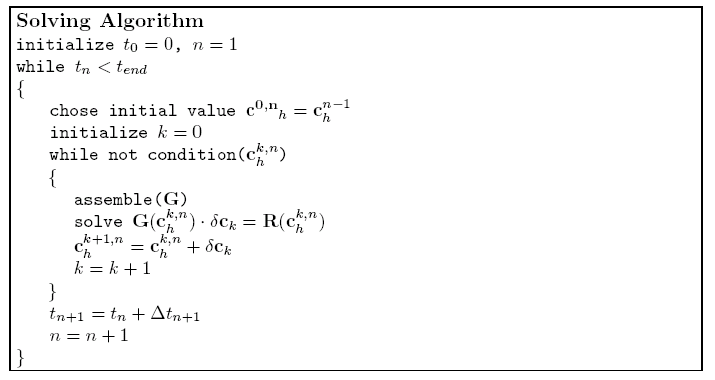
The complete solving procedure for a time dependent problem has the following structure,

This yields values of
![]() for discrete times
for discrete times
![]() .
Automatic time step and mesh control are discussed in the next section.
As the terminating condition (condition(
.
Automatic time step and mesh control are discussed in the next section.
As the terminating condition (condition(
![]() ) in the Solving Algorithm) for the Newton loop, the following inequalities are commonly used,
) in the Solving Algorithm) for the Newton loop, the following inequalities are commonly used,
| (2.48) |
| (2.49) |
| (2.50) |
where
![]() ,
,
![]() , and
, and ![]() are given tolerances and
are given tolerances and ![]() Euclidian norm.
Euclidian norm.